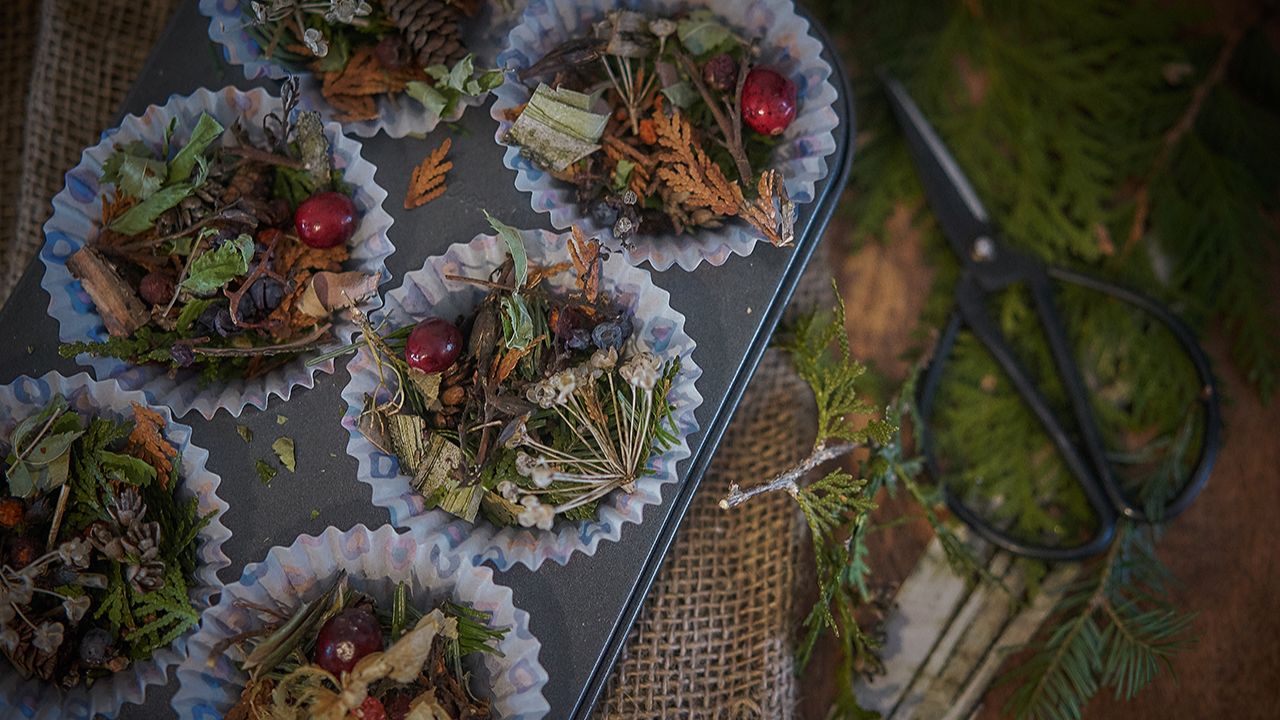
Make Your Own Herb Salt
For years, we’ve heard about the importance of getting a variety of vitamins and minerals in our foods – so much so that billions of dollars of vitamin and mineral supplements are sold each year.
But in our rush to identify valuable nutrients, we overlooked something important: phytonutrients!
In this herb salt recipe, we are going to use three herbs that are exceptionally high in phytonutrients.
What are phytonutrients?
Phytonutrients are a range of beneficial chemicals found within plants. (You’ve probably heard of some of these before, like quercetin and resveratrol.)
Plants create phytonutrients to help them to grow or to fight off predators and it turns out that many plant chemicals (sometimes called secondary metabolites) help us, too!
Going far back into history, your ancestors probably ate a lot more phytonutrients than you do. That’s because today we generally consume a limited amount of fruits and vegetables, not just in the quantity but also in regard to the diversity.

If you wrote down a list of all the different kinds of fruits and veggies you ate within a year, how many different types do you think would be on that list? 10? 20? 30?
Some hunter-gatherer peoples ate an estimated 800 different types of plants throughout a given year! (Although, of course, some in northern climates ate fewer types of plants.)
In recent years, phytonutrients have especially caught our attention because of their ability to modulate chronic inflammation. Chronic systemic inflammation is a major underlying cause of many of our modern diseases, such as type 2 diabetes and heart disease.
As we compare our modern-day consumption of phytonutrients to our ancestors’, and as our understanding of phytonutrients grows, more and more researchers and nutritionists are wondering: is our lack of phytonutrients causing some of our modern-day health imbalances?

How many phytonutrients should you eat?
When it comes to getting an optimal amount of phytonutrients in your diet, it’s a bit different from how we think of vitamins and minerals.
For vitamins and minerals, there is a daily recommended amount. If you get too little of a vitamin or mineral, then you may see negative consequences.
When thinking about general health, with phytonutrients what seems to be important isn’t necessarily a set amount of something but an evolving diversity of different sources. In many cases, it’s not about how MUCH of one particular thing but rather how many types. In other words, a little can go a long way!
What’s the best source of phytonutrients?
Phytonutrients are found in fruits, vegetables, and, you guessed it, herbs.
In fact, herbs are some of our richest sources of phytonutrients and enjoying them in your daily diet is a delicious way to get a variety of those benefits. Consuming phytonutrients through herbs and spices is far superior to taking a supplement.1 That’s because isolated extracts haven’t been shown to have the same benefits. This is where whole plant medicine really shines!
The three herbs in our herb salt blend are especially high in phytonutrients.

Parsley (Petroselinum crispum)
Often dismissed as a garnish, parsley is an abundant source of phytochemicals and is a powerful antioxidant!2 One flavonoid, apigenin, has been frequently studied for its effects against cancer and as an antioxidant.
You commonly see two types of parsley being sold at the store. One is the curly-leaf parsley and one is the Italian or flat-leaf parsley. Flat-leaf parsley has a much more vibrant taste and is often preferred as a richer source of nutrients. You can, however, use either kind of parsley for this recipe.

Chives (Allium schoenoprasum)
Now commonly grown in gardens, chives are a native plant in North America and Europe. These plants are very easy to grow, and in the springtime, their prolific purple flowers attract many pollinators. Both the flowers and leaves are edible and they have a mildly spicy and fresh taste.
The allium, or onion, family is well known for its health benefits. Phytonutrients within alliums have been widely studied for their benefits on the heart.3 4
It turns out that chives and their close cousins, green onions, have a lot more phytonutrients than bulb onions! Since I learned that, I’ve been adding lots of fresh chives and chopped scallions to our meals year-round.

Oregano (Origanum vulgare)
Oregano is exceptionally high in flavonoids and phenols, many of which have been shown to have antioxidant and inflammatory modulating potential.5 In studies, oregano is often shown to have one of the highest amounts of antioxidants.

What about the salt?
Salt comes in many different types, ranging from your average table salt to exotic salts from faraway places.
When choosing salt, one of the most important considerations is how it is shaped. Small, granular salt is great for adding to food during the cooking process. Large, flaked salt melts on the tongue in a dispersive way, making it a better choice for adding to meals after they are cooked (it is often referred to as a finishing salt). Look for flaky salt like Maldon or fleur de sel for this herb salt recipe.

Fresh Herb Salt Recipe
Preserve the vibrant taste of fresh herbs in this seasoning salt. Parsley, chives, and oregano are a delicious combination of savory, spicy, and aromatic herbs that will enliven your foods. Using flaky salt, such as Maldon or fleur de sel, makes this a wonderful finishing salt. Keep it on your dinner table and use often!
What you’ll need…
- 1/2 cup finely chopped fresh parsley leaves
- 1/4 cup finely chopped fresh chives and flowers
- 1/4 cup finely chopped fresh oregano leaves
- 1/2 cup flaky salt
- Need herbs? Visit Mountain Rose Herbs.
- Combine all the herbs and salt together.
 |
 |
|---|
- Spread the mixture onto a parchment paper-lined baking pan and keep it out of direct sunlight. Stir once a day to aerate and break up clumps.

- After the herbs have dried (roughly 36 to 48 hours), store the herb salt in a tightly sealed container and use within 1 month.

- Sprinkle as desired as a finishing salt on veggies and meats.
Yield: About 1 cup











